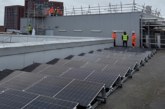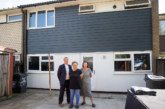
Although alleviating fuel poverty by reducing bills for end-users and cutting carbon emissions are two of the core aims of heat networks, current design practices are putting these ambitions at risk, claims Pete Mills from Bosch Commercial and Industrial.
Those designing heat networks and district heating schemes, whether due to budgetary concerns or technical considerations, are too often opting out of using renewable energy, waste heat, or low carbon technologies. The issue is particularly prevalent in small- and medium-sized developments comprising of 200 dwellings or fewer.
According to Pete Mills, Commercial Technical Operations Manager at Bosch Commercial and Industrial, end-users will often see no perceivable benefits in their bills without these technologies, and in the worst cases, the costs of energy can actually increase.
Commenting on the trend, Pete Mills said: “It has become increasingly common for heat network design plans to feature little or no low carbon and renewable technologies. As well as producing a poor result for building operators and users on an individual scale, controversy around poorly performing schemes is calling into question heat networks in general, which if implemented correctly can make a significant contribution to decarbonising the UK’s building stock, as well as alleviating fuel poverty.
“It’s integral that, as an industry, we take a user-first approach in the design and implementation of heat networks, incorporating those technologies that are going to have the greatest benefit for building operators and end-users. That would involve the use of renewable energy, waste heat, or low carbon technologies.”
Pete continued: “To increase the uptake of renewable and low carbon technologies, it is also beholden upon developers and housing associations to include low carbon and renewable technologies, as part of their heat network specification, in order to ensure fairly-priced heat.
“At Bosch we have considerable experience in the development of heat networks, and particularly in combining them with renewable technologies using standard hydraulic and control arrangements, which can be adapted to specific use cases. Working closely with contractors early on, it has been possible to develop solutions that ensure the best return in terms of reduced costs and lower CO2 emissions.”








